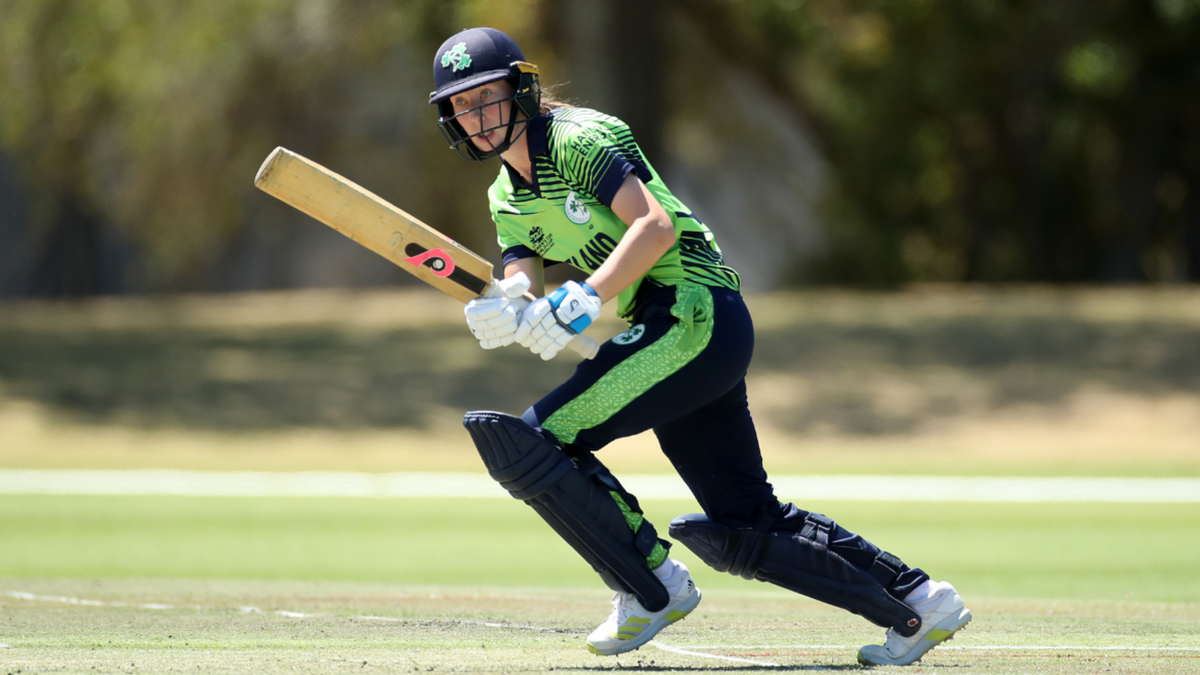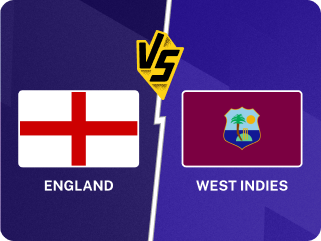
Interview: Orla Prendergast is only 20 but is closing in on 50 international caps. Since deciding to seriously pursue cricket three years ago, she has rapidly become one of the most exciting all-rounders in the world and forms a central part of Ireland’s ongoing ascendancy.
Orla Prendergast was at school when she made her Ireland debut. The familiar juggling act between commitments most teenagers balance in the latter stages of their education was made all the more precarious by a senior international call-up. For the vast majority, representing your country would be an unmissable opportunity, but for Prendergast, it meant a difficult decision.
“It wasn’t really my main objective at the time,” Prendergast told Wisden.com after returning from the T20 World Cup in South Africa. “I was always quite busy with football, that was my main sport growing up so I only really played cricket during the summer.
“Then the football season changed to be during summer, so I couldn’t really juggle both. At the time there was real progress being made with the women’s game in Ireland, cricket-wise, and I just decided to give it a go.
“We had three or four tours with Ireland that summer and one of my teammates in my domestic side came to me and said, ‘Would you not just give it a proper go for a few months in the summer and go on those tours?’ So I decided I should commit to it for that amount of time and see how it went. I never looked back.”
Three years later, Prendergast has just emerged from her first T20 World Cup as one of the standout young players from the tournament. She was the only Ireland player to score a half-century; she took three wickets in four matches; and her economy rate (6.00) was lower than any of her teammates.
On a personal level, the tournament was an unequivocal success. As a team, despite pushing India and England close in tight finishes, as well as finishing within a breath of beating the West Indies, Ireland come away still searching for a maiden World Cup win.
“I think we performed well as a team at times but I think looking back we definitely had more in the tank,” says Prendergast. “We definitely were able to beat some of those big teams so there’s some disappointment there.
“A thread running through each of our games was definitely our fielding. I think that probably let us down – our catching and ground fielding at times was very poor. It’s a disappointing one really because it’s something that we work a lot on as a team and we feel like we’ve improved our fielding quite a lot over the last 12-18 months. We batted and bowled well enough to win those games, so it was a decisive factor in letting us down.
“But to know that we bowled well enough against , we can definitely take a lot of confidence from that because if we fielded well it would’ve been a far smaller total.”
Central to the buzz around Prendergast’s future is the natural positivity and aggression which she brings to Ireland’s batting line-up. She made 109 runs at a strike rate of 125 in the competition. Only Danni Wyatt and Smriti Mandhana scored more runs at a quicker rate than her batting in the top three at the World Cup.
No Ireland player has scored more runs at a higher strike rate in T20Is than Prendergast (589 runs at 123). Already in her young career, she has the second-most fifties in the format for her country. In the history of women’s T20Is, only Ash Gardner has scored more runs at a higher strike rate at present.
“I absolutely love batting at three,” she says. “It’s always extremely clear what we want to do at the top. We go out and play with freedom and take the game on.”
“I love playing an attacking game and I think ever since Ed [Joyce, Ireland Women’s head coach] has come in, he’s made a huge impact for all of us, specifically batting-wise. He’s an absolutely outstanding batting coach and an excellent head coach.”
Prendergast’s praise of Joyce goes some way to illustrate his pivotal role in the strides made by Ireland over the last three years. In 2022, Ireland beat South Africa at home in the first T20I of a three-match series and registered a landmark T20I series victory on their first ever tour of Pakistan.
That series in Pakistan was their maiden bilateral T20I series win over a Full Member side away from home, but Ireland’s most significant victory to date came against Australia, when they overpowered the world champions – and champions-in-waiting – by three wickets days before they started their record-breaking tournament campaign.
“That’s probably one of the standouts of the tournament even though it wasn’t within the actual tournament,” says Prendergast. “As the game kept developing it was a case of ‘we’re still in with a chance, we can still win here’. In the back of our heads we knew we were considerable underdogs in that situation, but we went out in that second half and took on the game as usual. Laura Delany played a pivotal innings in the middle and it was the complete batting performance in a way. No player scored over 35 so it was a real team effort.
“It came down to the last over and we were like, ‘Oh my God we’re about to beat Australia!’ It was an absolutely amazing feeling.”
There are caveats to that victory, most notably the multiple retirements in Australia’s batting innings, but these shouldn’t be used to dent the message Ireland sent out with that win. Against the toughest of opposition, Ireland showed they weren’t to be treated as a side on which players could test out their form ahead of the perceived real challenge. They’re there to be taken seriously on merit alone.
Predictably, Ireland’s increased competitiveness on the international stage has not only come under Joyce’s leadership but has also been accelerated by professionalism and the introduction of central contracts. It’s an important part of both Ireland’s and Prendergast’s story.
“It’s a huge investment and makes such a difference for us as players who are trying to juggle college and work,” says Prendergast. “We have numerous full-time players now who have been able to set aside their general work and just focus on cricket.
“I suppose for young girls now there is the U19 World Cup and I hope a lot of those girls went over there and enjoyed themselves and now they can really push on and try and get into the senior squad and see that there is a living in Ireland to be made out of cricket.”
Ireland had the youngest squad at the T20 World Cup but, like Prendergast, some of their youngest names have significant international experience. Opportunities for consistent cricket against the best Full Member nations are still limited, a barrier to players hoping to develop their games against the highest quality of opposition.
The expansion of women’s franchise cricket, including the Hundred, WBBL, Fairbreak, WCPL, and now WPL should go some way to rectifying this, with international cricket no longer the only place where Irish players can hone their skills against the very best. This year, Prendergast is one of three Ireland names on the auction list for the women’s Hundred and has not set a reserve price.
“I think it definitely can be hard as a player from a smaller nation to get signed,” says Prendergast. “Which can be frustrating at times. But hopefully the more Irish players that put in performances in the Hundred and Fairbreak and stuff… they can give us a name that gets Irish players a bit more attention to hopefully break into it.”
For now, however, cricket has to take a back seat for Prendergast as her attention turns to her undergraduate degree in Sport and Exercise Science: “I didn’t put myself forward for the WPL due to academic commitments. I’m in my final year of college so I thought after a month off I better complete my degree and actually go to college. Cricket can go either way at times so to have a fallback is hugely important.”
Irish cricket has come a long way in a short space of time. Prendergast and their recent results are a measure of that, but there are still huge leaps to be taken if they are to bridge the gap between countries in which professional women’s cricket is more established. Prendergast is not only an indicator of significant progress for Ireland, but she also demonstrates the precarious position Ireland players are in.







